Iran… This fascinating country has been on your bucket list for months, you have already booked your plane tickets and you are now thinking about what you should fill your backpack with. But as a woman, some details still bother you… For instance, well, what should you fill your backpack with, exactly? And how should you wear this mandatory veil? What if you get your period during the trip? Is it dangerous to travel there on your own? What are the usages you should absolutely respect?
If not answered before your departure, all these questions can be a bit stressful and be a mental charge during the trip. That’s why I am willing to share my experience with you today (how generous is that, eh?) to help you enjoy Iran as you should! Also, Maryam, my good Iranian friend, has been giving me excellent tips all along my stay in the country that I hope you will find as useful as I did.
Clothes
As you know, the Islamic law clearly states that you should wear modest and respectful clothes at all-time (at least in public…) where all parts of your body should be covered but face, hands and feet. Good news: you can take your cute pair of sandals! Bad news: you will have to endure wearing a long sleeve shirt in one of the hottest country in the world…
So, in your backpack, you must no forget to take:
- One or two veils (scarves will do)
- Two long sleeve tee-shirts. If you can, choose clear coloured merino wool ones. (Merino wool has anti-bacterial properties and it is thermo-regulated, which can be quite useful in Iran, believe me!)
- A vest or long shirt that should cover your obscene curvy little butt down at least to half of your thighs. Take the lightest material you can find. First, for the obvious forecast reason I’ve been talking about earlier. Second, because if it’s dirty you can wash it in the evening without worrying that it will be dry or not in the following morning! Oh, one last thing: it must close (buttons or zipper).
- Two light trousers (or long skirts) that should be the largest you can (leggings and jeggings are not forbidden but not well considered by the mullahs and the older generation).
Moreover, and quite surprisingly, you are allowed to wear as much make-up as you want. You will notice that Iranian women are generally very girly.
In the pious places, chadors are often mandatory. Iranian chadors are large pieces of (usually black) fabric that must cover all the body from top to toes. But don’t worry, no need to take your cosy bed sheets with you! You will find that nice ladies are generally waiting for you at the women entrances of mosques. They will lend you a proper chador (most of the time leopard or flashy-flower printed) and they will even help you to put it on. One wee (very important) tip: if you are unfortunate enough to be visiting mosques carrying around your big backpack, ask the ladies at the entrance to keep it for you. This way you won’t look like a stupid camel (or crazy Quasimodo, some said) that everybody will want a selfie with!
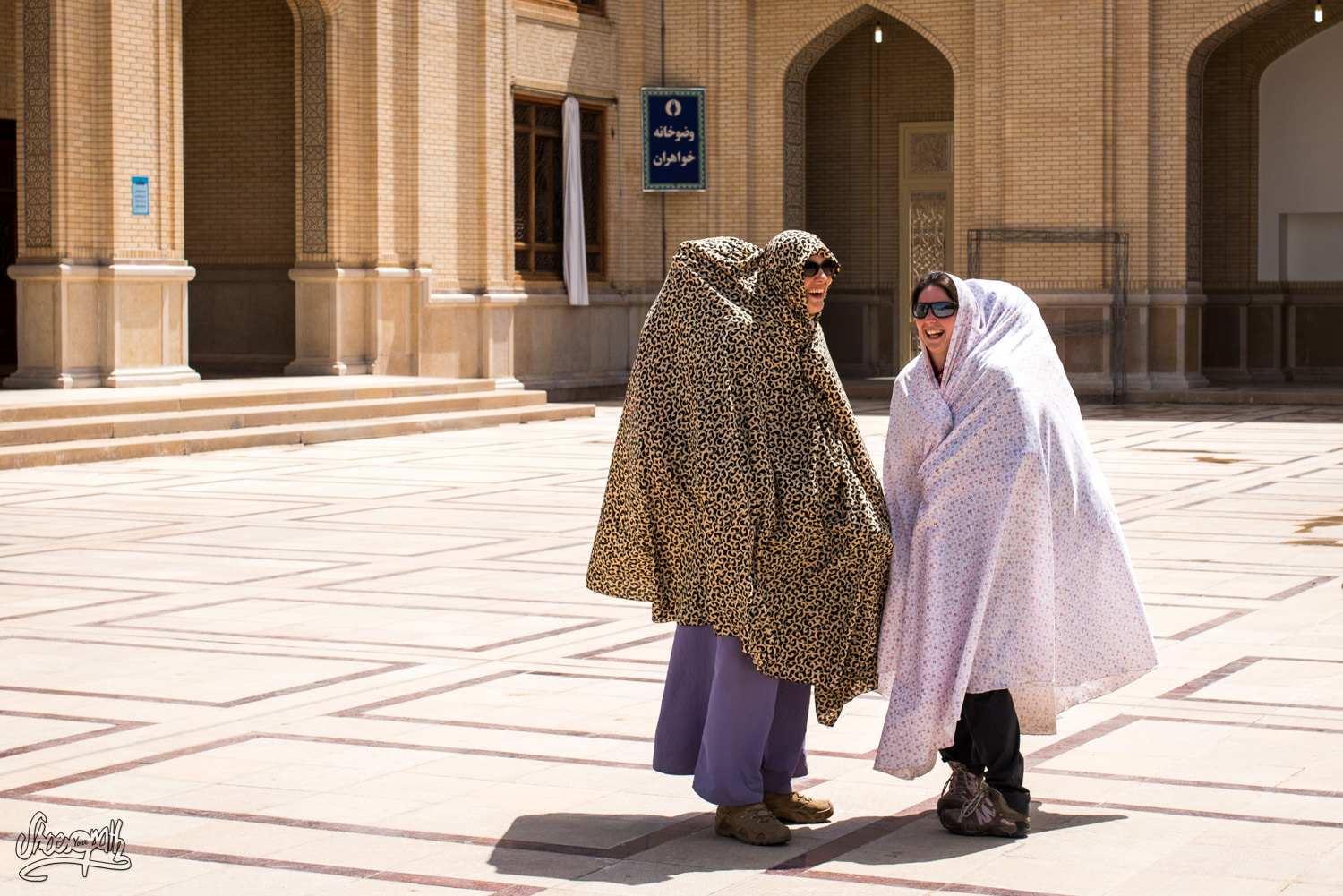
Wearing the veil
It is called hidjab or roussari in farsi. It will be your ever lasting travel mate during your entire trip!
First of all, you must choose the right scarf to take with you. You will have to try some of them out before you leave for Iran. Ideally, it must be large enough to cover your shoulders if necessary. It must also be light. It is annoying enough to wear without you being also hot under it. But be careful about the material you pick! Some light fabrics tend to slip from your hair all the time while some others will hold in place all day without you having to think about it.
There are two easy ways to wear the veil :
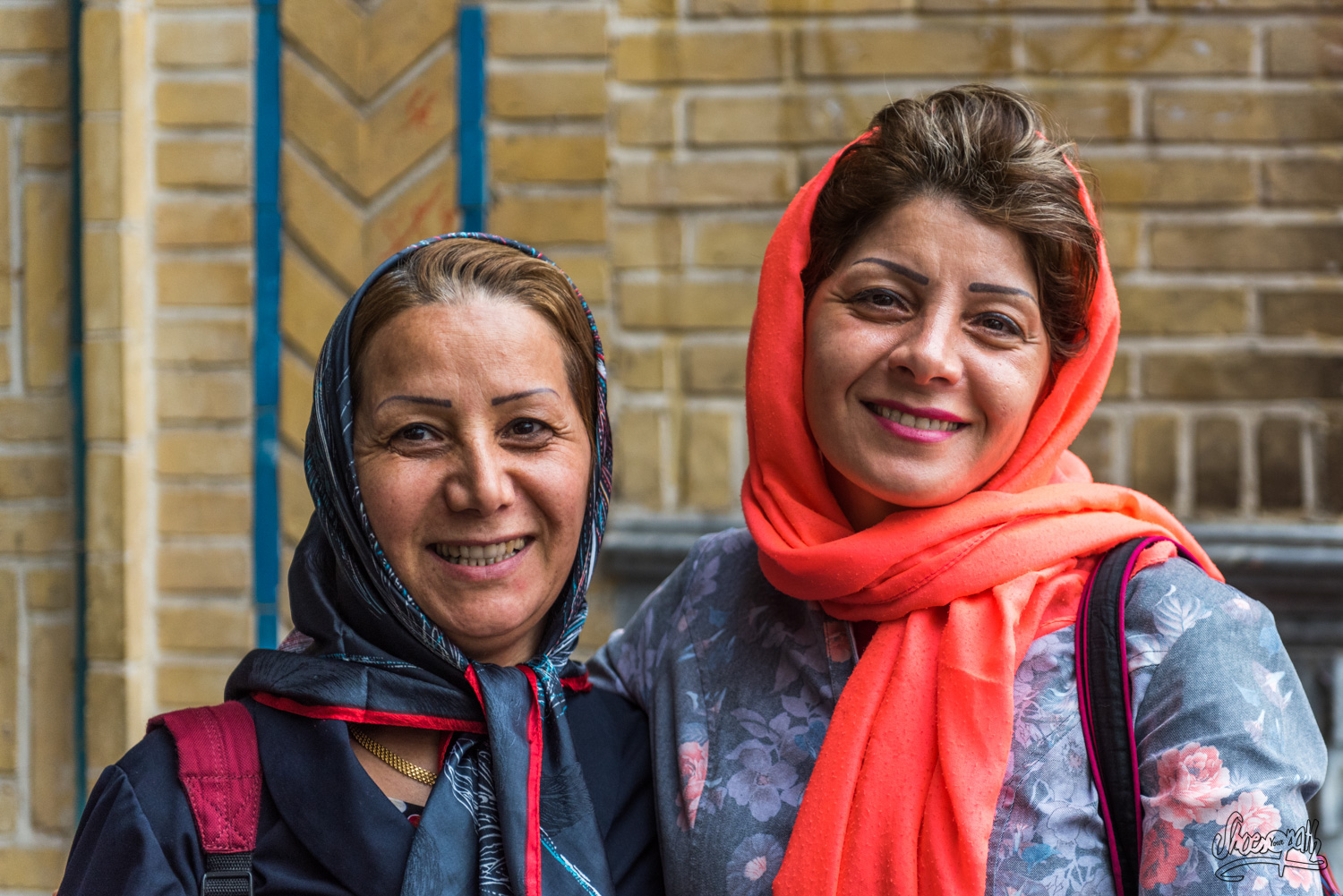
Don’t be jealous if you feel like you are a 100 times less attractive in your roussari than the gorgeous Iranian girls. Most of them found ways to bypass the law by turning the hidjab into a sensual fashion accessory and they’ve been practicing this artful skill for years! You are just missing the experience ^^ (or so I told myself :)…).
Codes of conduct
Before landing in Iran, there are different codes of conduct that you must be aware of. First, men and women shouldn’t have any contact of any sort. Meaning that you can’t hold hand with your sweetheart and least of all frenchkiss him in public (you horny slut 😉 )! In theory, when you meet a man in the street, you aren’t even allowed to shake hands with him. But don’t worry, this is only a general rule. In reality, it really depends on what kind of persons you meet and their approach on religion and traditionalism. What I did: I always waited for the men to do the first step and I would just follow them. Some will just nod, other will be willing to shake your hand and, more rarely, other will want to kiss you on the cheek (kind of French-style but three times instead of two).
Metro wagons in Tehran welcome both women and men. Though there are a few wagons that are exclusively for women who wouldn’t feel comfortable sharing a wagon with men during rush hours. Proximity between gender can be very stressful for men and women alike… Fact is, we noticed that there were very few women in the mixed wagons, and most of the time they were accompanied by a man.
Concerning the city buses, they are quite literally cut in two. A thick iron bar separates the genders. The front for men, the back for women! So at the end of any bus trip, you are forced to get off the bus by the rear door, then to climb back on by the front door to pay the bus driver! Easy peasy, and quite logical as you may notice. On a few buses though you may find the other way around and be allowed to sit in front and the men at the rear (lucky you).
On the other hand, on long-distance buses you may sit wherever you want.
In embassies and other administrative institutions, they are generally a bit cranky about the dress code. Try not to wear colours that are too bright, tidy your unruly hair under your hidjab and close your vest!
In a lot of places, you will find two entries. One for women and one for men. In public toilets, of course, but also in some train or bus stations, administrations, and mosques.
That said, you should not worry too much about all those rules. Try to respect them as much as you can, but be aware that as a tourist, they won’t bother you at all with them. The worst thing that could happen to you is to have people in the street kindly warning you if your veil has fallen from your head without you noticing! They know you have other habits at home so they will never hold any mistakes you could do against you. Nonetheless, it could be nice to apply the taarof whenever you can… What’s taarof? This tricky rule of super-politeness is very hard to master let alone to understand…
Travelling alone
Iran doesn’t seem to be less nor more dangerous than anywhere else… I didn’t experience travelling alone there, but I met many girls who did and had absolutely no problems. As usual, take care, respect the dress code and try not to wander alone at night… But don’t be paranoiac either!
Having your period in Iran
Well, that matters, right? Personally, I was very worried about this last point. For example, to which point is having your period a taboo in Iran? Are there a lot of public toilets? Are they clean? What kind of periodic protections can you find there?
First, try to memorize this useful sentence: « Bébarchid, dastchoui kodjast ? » (sorry, where are the toilets?)
You also have to know that you (nearly) won’t find any European toilets in Iran but only squat toilets. Now, they do have a bad image in Europe as we tend to see them as revoltingly dirty (maybe because they tend to be, in Europe?). But as a matter of fact, those are my favourite toilets during travels, because I really do consider them as the most hygienic. Using them, you definitely don’t take any risk to sit in a pool of cold pee (bweeeark) and it’s way less tiring for your leg muscles! Note that cleanliness is very important to Iranians so you can expect public toilets to be washed regularly with disinfectant (well, most of the time). Concerning public toilets, they are easy to find everywhere and, in case of emergency, you can ask for “dastchoui” to anyone in the street and he or she will be happy to guide you to the nearest one.
Toilet paper is also very rare… as are toilet bins! And it is totally forbidden to drop anything in the toilets unless you want to clog the pipes. I understood that Iranian women keep their used menstrual protections in their bag until they can throw them in a bin at home… Or they try to find considerate public toilettes with bins!
Instead of using toilet paper, Iranians use a small mysterious water pipe that you can find most of the time on the right side of the wall in the toilets. It felt weird at first to rinse my cheeky butt with it… but I got used to it after a time! It is similar to what you can find in many countries of south east Asia.
To sum up: don’t forget to carry tissues or toilet paper on you at all times, along with a little plastic bag where you could store your used periodic protections until you find a better place for them… You will have no problems finding pads and tampons in Iran if needed. If you ask discreetly other women around you, they will help you out for sure!
Personally, I am using a menstrual cup, which I found to be the best solution. Indeed, it is easy to wash thanks to the little water pipe in every toilet, plus you don’t have to carry around embarrassing rubbish!
I hope you found useful information in this post! Please don’t hesitate to share your own experience at the bottom of this article to help out other girls.
Bon voyage !
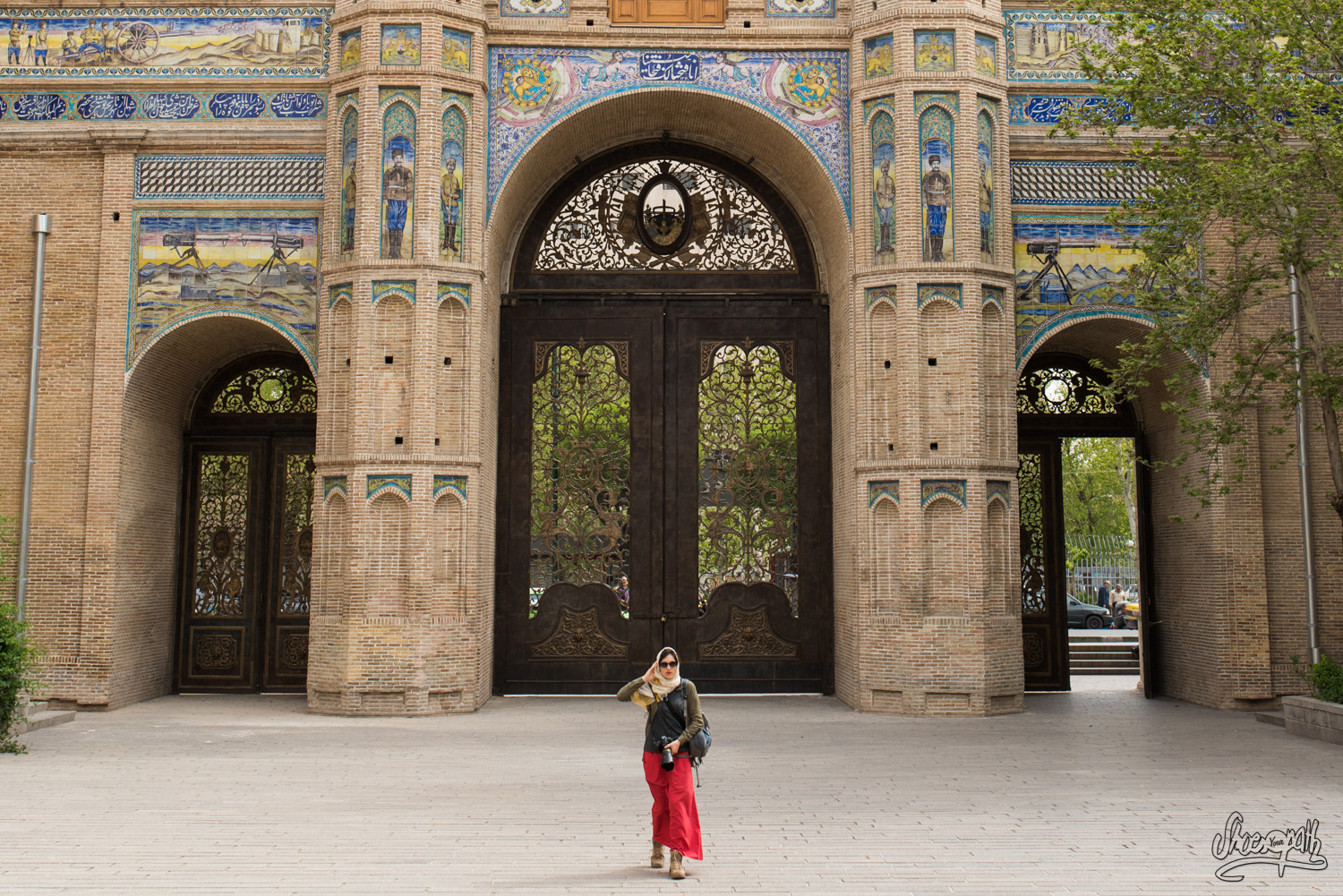

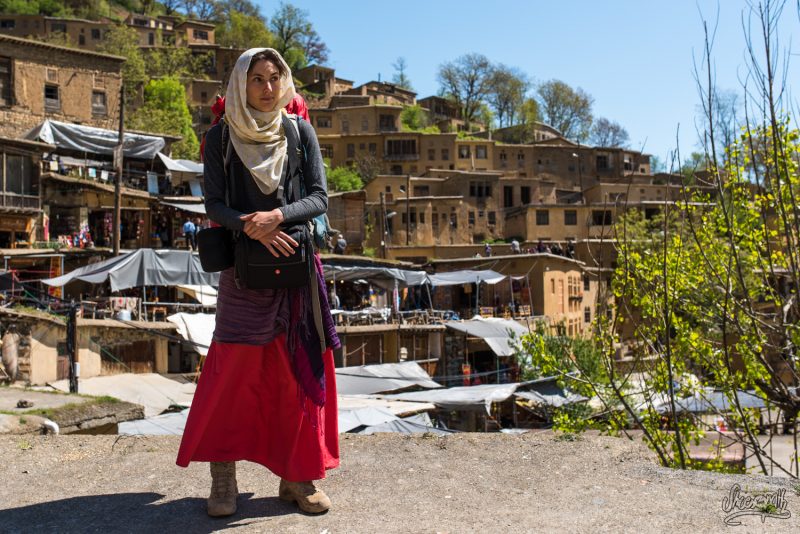
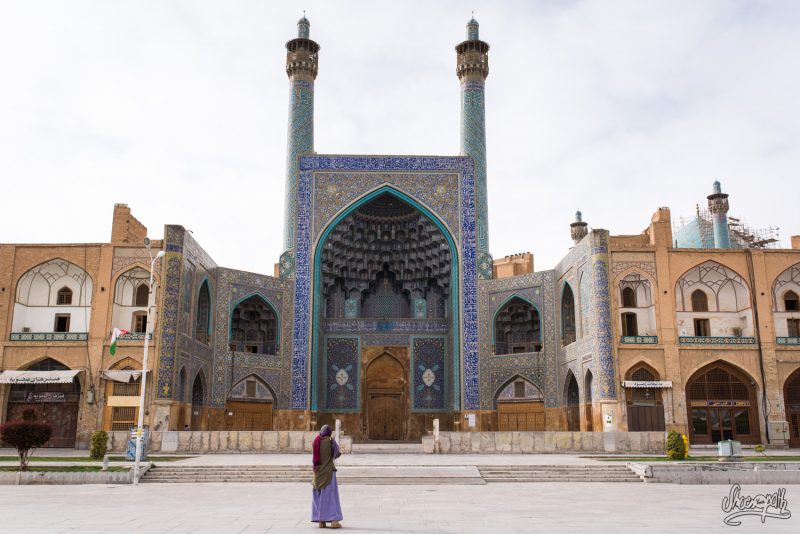
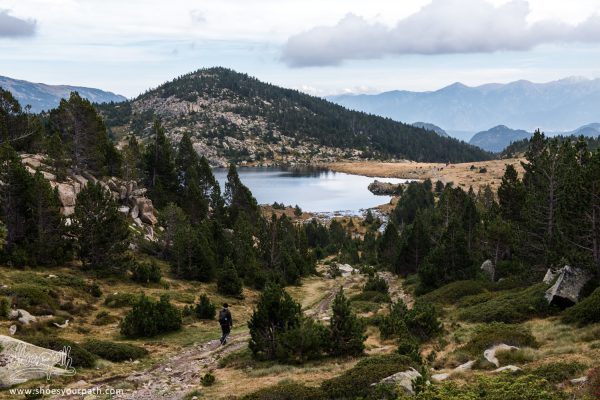
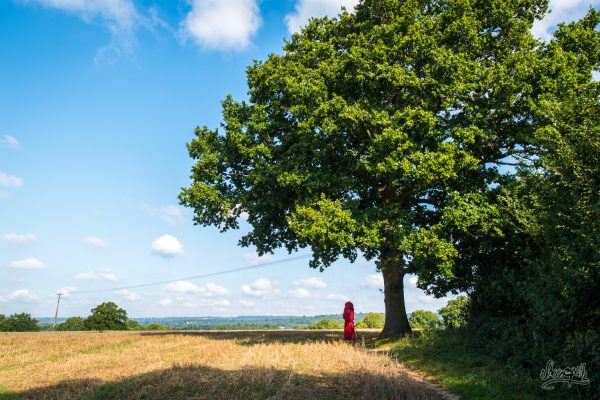
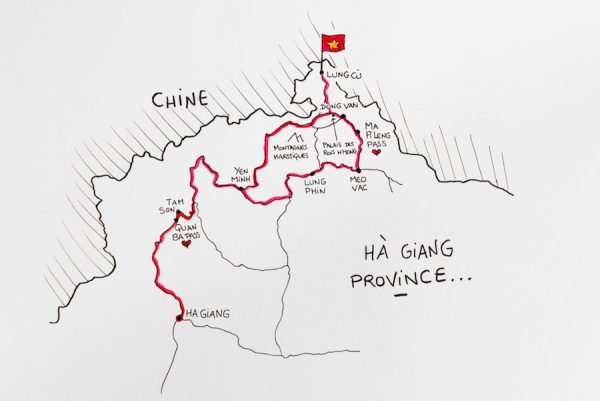
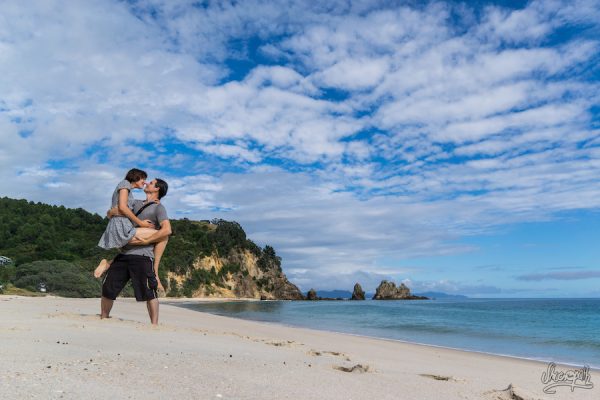
Cet article comporte 0 commentaires